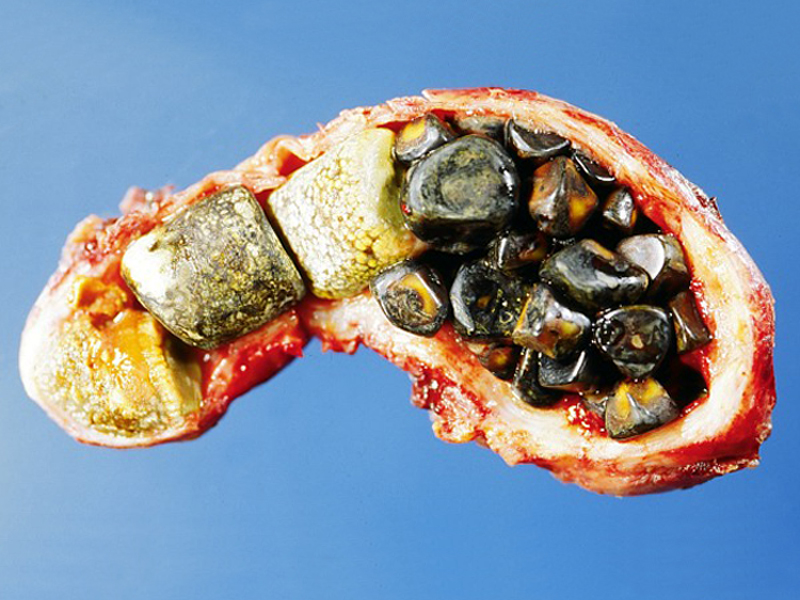Who Owns Your Body Parts?

After tissue is surgically removed who owns it? Can you take it home? Can you at least have a look at it? When, as an interventional radiologist, I used to remove gallstones through a small tube leading through the skin to the gallbladder, patients often asked to see them and take them home. I tended to grant their request; after first taking the safeguard of rinsing the stones in cleaning solution. Things were a bit more complicated with another popular item for viewing in my practice, the very large blood clots (some of them life threatening) from patients’ lungs and blood vessels that I had extracted. These items, however, had to be preserved in formalin and sent for evaluation to the pathologist since the composition of the clots could affect future treatment. Thus, no taking home in these cases even before lots of new regulations came into play.
What was once an integral part of your body after surgical removal immediately becomes “regulated medical waste” or “biohazard.” That means that usually you will not be able to take it home, except perhaps extracted teeth, but even these rules vary widely by states (1). If you live in New York State and are so inclined you may take a bigger chunk of you with you legally: “Organs or recognizable body parts which have been removed during surgery can be retained by the patient for religious purposes provided that the organs or body parts cannot serve as sources of disease transmission” (2).
When signing a surgical consent form it sometimes addresses disposal of tissue, not necessarily telling you that your signature is legal transfer of ownership. One perhaps may not be as concerned about tissue being incinerated, but what happens when it is kept alive in others’ hands? The best-(worst)known example may be what happened to an African American woman, Henrietta Lacks. Cancer cells removed from her cervix in 1951 were kept alive in laboratories around the world as the HeLa cell-line until now, enabling considerable medical progress and endowing a certain amount of immortality. However, all this was done without her consent. Modern genetics also can extract so much information from cells that health issues of descendants can be revealed if published. Thus, after much effort in 2013, Ms. Lack’s grandchildren reached an unprecedented historic agreement with the National Institute of Health requiring their permission as to who can get access to the cells and the information they contain and what can be published (3).
Modern biobanks also collect human tissue material, often in combination with information about disease history and lifestyle (4). The hope is that this research helps investigators better understand disease development and enables “personalized” treatment e.g., to identify upfront whether or which therapy can be effective given a patient’s genetic make-up. But let’s say a person has a “valuable” gene, and a laboratory starts to exploit it for commercial purposes. Lawsuits have been fought over whether a person with a such a gene or tissue component ceases to own his or her own genetic information including the revenue derived from associated products, or at least be able to veto or withdraw consent for continued use (5). Ethics aside, the law currently tends to favor the collecting facility rather than the patient donor when it comes to ownership (6).
It is advisable to read consent to tissue disposal carefully. When I accompanied a patient to a removal of a skin lesion, he was handed a consent form to have the tissue used for DNA research, looking at the correlation of health and genetic make-up. Correlating current status of health and DNA make-up might have been okay, but this could also have been interpreted as giving open-ended access to the charts of the patient and descendants to monitor the development of any future disease. The form was unclear, and I advised against signing.
Considering the complex legal landscape it is advisable to think about tissue disposal before surgery and devise a plan of action. Even if you may just want to look at something after it has been removed, and the case is performed under anesthesia, upfront arrangements are essential.
References
This blog is an excerpt from my book “Managing Your Medical Experience” with many more valuable insights and tips
- Oral Answers. Can you keep your extracted teeth? 2014 [updated 30 Dec 2014]. Available from: http://www.oralanswers.com/can-you-keep-extracted-teeth/.
- The New York State Department of Health. Subcategory – Human pathological wastes [updated July 2006]. Available from: https://http://www.health.ny.gov/facilities/waste/ – human_pathological_wastes.
- Winslow R. Privacy deal over key set of genes. Wall Street Journal. 8 August 2013.
- Hansson MG. Ethics and biobanks. British Journal of Cancer. 2009;100:8-12.
- Helgesson G, Johnsson L. The right to withdraw consent to research on biobank samples. Medical Health Care Philosophy. 2005;8:315-21.
- Girod J, Drabiak K. A proposal for comprehensive biobank research laws to promote translational medicine in Indiana. Indiana Health Law Review. 2008;5:217-50.

4 Comments
Wondering who I can go to with my specimen to clean it and put it in a formaldehyde like fluid forever
It depends on the size and consistency of the material. By using gloves and clean technique, you might be able to do it yourself e.g., with a toothbrush for a tooth or gallstone. Some tissue pieces usually would come in some solution to you, and you could replace that with formalin. Some items you may want to put in resin. In the hospital may be to ask the pathologist what he/she thinks would be best for preservation.
Please send me the legal authority document that gives a patient the legal right to their surgically removed pody impart.
The legal approach is typically contained in the medical consent form you sign – where you may need to cross out and initial the part that says that you are letting the facility dispose of what they remove.